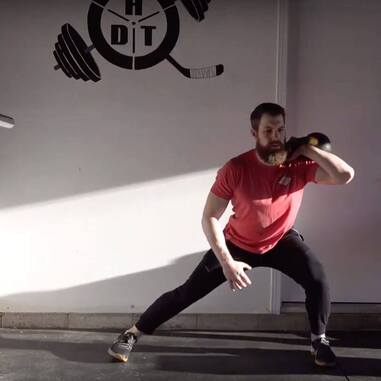Jordan Bent
Jordan's passion for hockey began in the Saint John area, where he played at high levels throughout his minor hockey career. After his successful stint with the Saint John Vitos of the NBPEIMMHL, he joined the Cornwall Colts in the CJHL. Following two seasons in Cornwall, Jordan signed with Woodstock in 2008/2009, where he had the opportunity to play alongside Co-Founder Kyle Chagnon. Concluding his junior career in Woodstock, he returned to Ontario to play for the Brock Badgers in the OUA-CIS (U-Sports). During his second season, Jordan had a stint with the Mississippi Riverkings in the SPHL before returning to finish off the 2013/2014 season with the Badgers.
While attending school, Jordan faced the challenge of finding suitable training and skating facilities during the off-season in rural New Brunswick. This led him to establish HDT in the summer of 2009, providing training sessions for local hockey players and teams. HDT quickly expanded, offering strength and conditioning programs for both the Men's and Women's hockey teams at Brock University. Additionally, they began delivering online programs to players who were away for their seasons, allowing HDT to reach a broader audience.
In 2014, Jordan became the strength and conditioning coach at the Ontario Hockey Academy, working with talented hockey players from around the world during the season. During the summer, he returned to Niagara to run training programs. The demand for quality services led HDT to embrace online delivery, enabling them to cater to athletes regardless of their geographical location. Since 2018, HDT has primarily operated online, providing individual performance programming and consulting for athletes and teams. This shift has allowed HDT to extend its reach to athletes in more than 30 countries, breaking down geographical barriers through technology.
While attending school, Jordan faced the challenge of finding suitable training and skating facilities during the off-season in rural New Brunswick. This led him to establish HDT in the summer of 2009, providing training sessions for local hockey players and teams. HDT quickly expanded, offering strength and conditioning programs for both the Men's and Women's hockey teams at Brock University. Additionally, they began delivering online programs to players who were away for their seasons, allowing HDT to reach a broader audience.
In 2014, Jordan became the strength and conditioning coach at the Ontario Hockey Academy, working with talented hockey players from around the world during the season. During the summer, he returned to Niagara to run training programs. The demand for quality services led HDT to embrace online delivery, enabling them to cater to athletes regardless of their geographical location. Since 2018, HDT has primarily operated online, providing individual performance programming and consulting for athletes and teams. This shift has allowed HDT to extend its reach to athletes in more than 30 countries, breaking down geographical barriers through technology.









